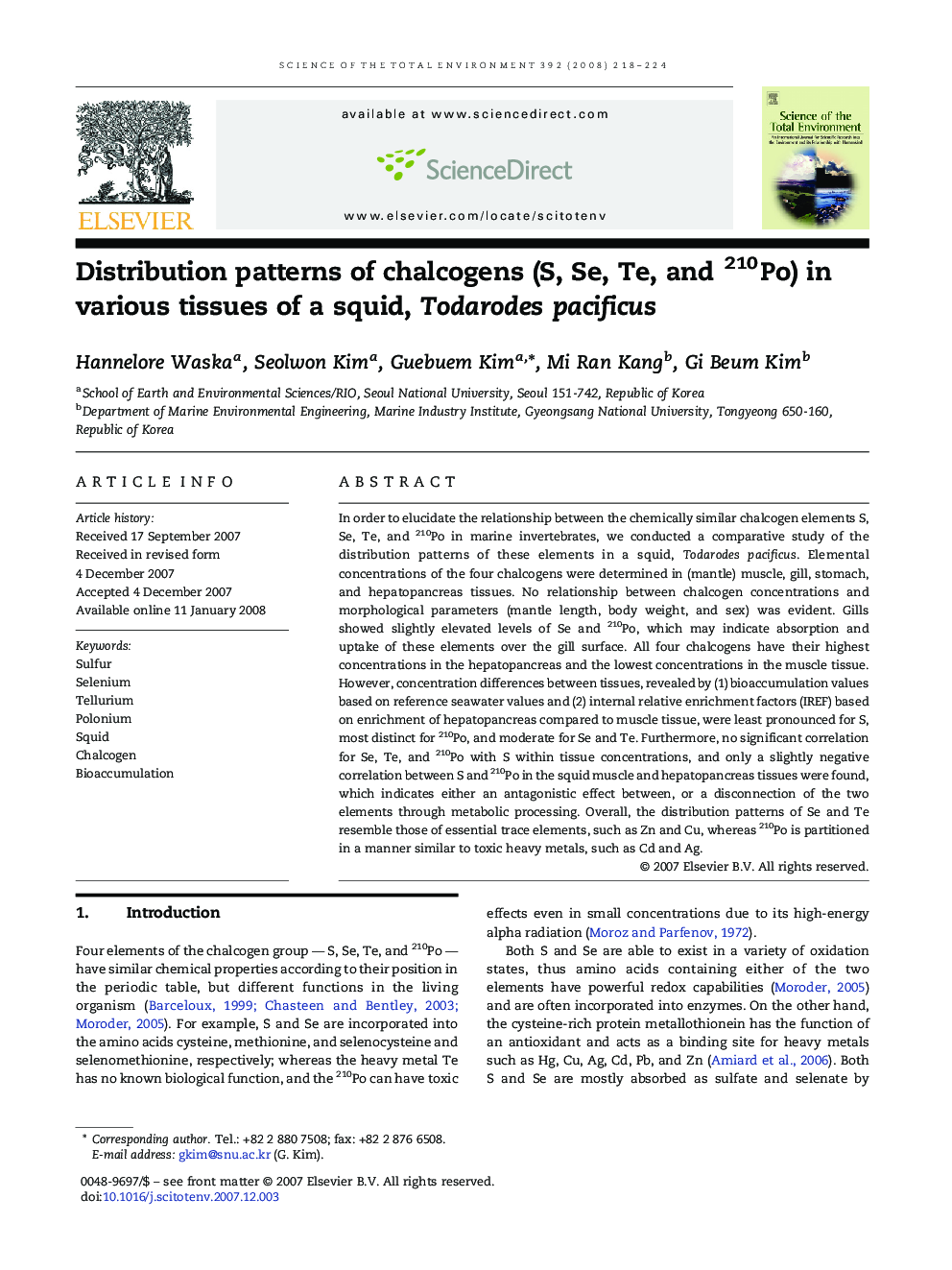| Article ID | Journal | Published Year | Pages | File Type |
|---|---|---|---|---|
| 4433085 | Science of The Total Environment | 2008 | 7 Pages |
In order to elucidate the relationship between the chemically similar chalcogen elements S, Se, Te, and 210Po in marine invertebrates, we conducted a comparative study of the distribution patterns of these elements in a squid, Todarodes pacificus. Elemental concentrations of the four chalcogens were determined in (mantle) muscle, gill, stomach, and hepatopancreas tissues. No relationship between chalcogen concentrations and morphological parameters (mantle length, body weight, and sex) was evident. Gills showed slightly elevated levels of Se and 210Po, which may indicate absorption and uptake of these elements over the gill surface. All four chalcogens have their highest concentrations in the hepatopancreas and the lowest concentrations in the muscle tissue. However, concentration differences between tissues, revealed by (1) bioaccumulation values based on reference seawater values and (2) internal relative enrichment factors (IREF) based on enrichment of hepatopancreas compared to muscle tissue, were least pronounced for S, most distinct for 210Po, and moderate for Se and Te. Furthermore, no significant correlation for Se, Te, and 210Po with S within tissue concentrations, and only a slightly negative correlation between S and 210Po in the squid muscle and hepatopancreas tissues were found, which indicates either an antagonistic effect between, or a disconnection of the two elements through metabolic processing. Overall, the distribution patterns of Se and Te resemble those of essential trace elements, such as Zn and Cu, whereas 210Po is partitioned in a manner similar to toxic heavy metals, such as Cd and Ag.
